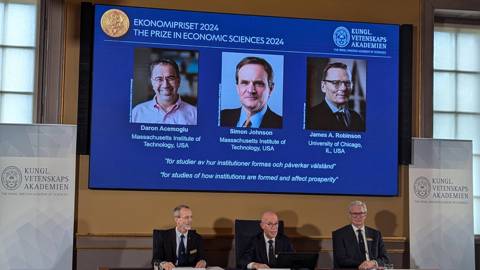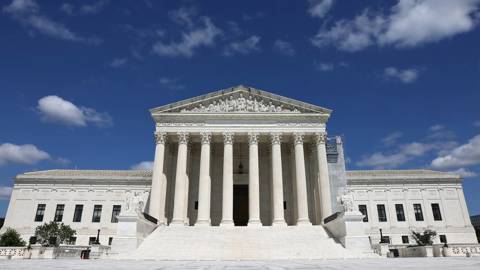Mónica Araya
Says More…
This week in Say More, PS talks with Mónica Araya, Executive Director, International, at the European Climate Foundation.
Project Syndicate: In 2020, you wrote that, “Our long-term success at managing climate change will depend heavily on the energy and transportation strategies we adopt this decade, particularly over the next five years.” Nearly three years later, where have promising strategies been adopted, and are we nearing the point where “zero-emission electric vehicles outcompete polluting vehicles in the market”?
Mónica Araya: Important progress has been made in the last three years. In Europe, the Fit for 55 package – a set of initiatives that support the European Union’s goal of reducing net greenhouse-gas emissions by at least 55% by 2030 – includes a deal to end the sale of new carbon-emitting vehicles by 2035. All new cars or vans placed on the market in the EU from that point should be electric.
China has created the world’s largest market for electric vehicles (EVs) in all segments, through ambitious supportive policies pursued at the national and subnational levels. India has strengthened incentives for electric buses and two- and three-wheelers. The United States has introduced new EV incentives for consumers, and EV credits for investors, as part of the 2022 Inflation Reduction Act (IRA).
Such efforts are making a difference. In 2022, EVs accounted for about 15% of all new car sales, on average, across Europe, China, India, and the US, compared to just 5% two years earlier. Electrification is also advancing in other segments – including buses and heavy trucks – and urban investments in cycle lanes and walkability are on the rise.
PS: But recent news about the EV market in the US has been mixed. Despite record-breaking EV sales this year, production may be outpacing demand, forcing manufacturers to lower prices and leaving some dealerships holding excess inventory. With many predicting an imminent slowdown in EV adoption, is policy intervention warranted, and what lessons does America’s experience hold for the development of the EV market in there and elsewhere?
MA: If we are seeking lessons on EV adoption for the world – say, Costa Rica or South Africa – we should look to Europe and China (and California) before we look to the American federal government. In the US, a delayed commitment to electrification has caused a growing number of consumers to become locked into a culture of impossibly large polluting vehicles. This trend has been compounded by underinvestment in mass transit and alternative modes of transportation. With more mobility choices beyond private car ownership, EVs are more likely to win hearts and minds.
Yes, the US has re-entered the EV race by unlocking $100 billion worth of investments in tax credits, grants, and loans as part of the IRA and the Infrastructure Investment and Jobs Act. But the transition will not be easy.
One positive lesson from the US is that highlighting the tangible benefits EVs will bring to workers, consumers, and investors – as President Joe Biden’s administration has done – can be very effective. In fact, despite being the biggest climate legislation in US history, the IRA focuses far less on emissions than it does on jobs, investment, and infrastructure.

Secure your copy of PS Quarterly: The Climate Crucible
The newest issue of our magazine, PS Quarterly: The Climate Crucible, is here. To gain digital access to all of the magazine’s content, and receive your print copy, subscribe to PS Premium now.
PS: In 2020, you rated Biden’s campaign platform on greenhouse-gas emissions “favorably.” As President, Biden spearheaded the passage of the IRA, the largest climate legislation in US history. At the same time, in its first two years, the Biden administration has approved 6,430 permits for oil and gas drilling on US public lands, compared to 6,172 approvals under his predecessor, Donald Trump. Given this, is the view that the US has rejoined the fight against climate change more hype than reality?
MA: Under Biden’s leadership, America has undoubtedly rejoined the fight against climate change. Remember that, on his very first day in office, Biden recommitted the US to the 2015 Paris climate agreement. And the passage of the IRA last year, after numerous legislative defeats and despite deep polarization, was a major achievement.
But the world – not just the US – is losing the political battle against Big Oil and Big Gas. The fossil-fuel industry has been making historic profits since the start of the war in Ukraine. And it has used its money and power to influence every government, whether left- or right-leaning, in every country, large or small, developed or developing.
From the United Kingdom to the United Arab Emirates, from the US to Argentina, governments everywhere are saying yes to renewables. But they are also saying yes to more drilling for oil and gas. For citizens, how to hold our governments and the fossil-fuel industry accountable is the political question of our time.
BY THE WAY . . .
PS: As Mercosur (Argentina, Brazil, Paraguay, and Uruguay) prepares a counter-proposal on its long-delayed trade deal with the EU, you advise both sides to be “more imaginative and pragmatic in their value proposition,” “aim bigger,” and “make up for lost time.” What concrete changes are needed to achieve a deal that not only boosts trade between Europe and Latin America, but also advances climate goals? Are trade deals the right tool for strengthening environmental protection?
MA: Changes must come from both sides. Most fundamentally, there is a need to move past the antiquated idea that Europe brings all the ideas and resources, and Latin America and the Caribbean merely take what is “offered.” This asymmetry precludes both mutual trust and effective strategic partnership.
Instead, the two regions must embrace an equitable framework for cooperation that goes beyond the usual lowering of tariffs and promotion of products and services, to account for the goals and commitments associated with the Paris climate agreement. Better management of natural resources, within a democratic context, is essential.
This calls for partnerships that account for transition minerals, integrating them into a broader agenda of sustainability, human rights, and innovation. In fact, broad agreements on economic and political cooperation are better suited to promote climate and other environmental objectives than narrow trade deals.
PS: The EU is widely viewed as a world leader in climate action. But you have noted that initiatives like the Green Deal and Fit for 55 are not enough. The EU must “go deeper and faster in the pursuit of green industries and a competitive edge.” What steps should policymakers be taking to advance these goals, and where does the private sector come in?
MA: If the EU is to advance its environmental goals, it must integrate initiatives into a broader political narrative that is centered not on climate or emissions, but on people. The green transition does not involve only CEOs and corporations; it also has huge implications for workers and small and medium-size enterprises (SMEs). The political narrative must reflect that, by addressing, for example, how the industrial transformation affects local communities and SMEs, and whether the vision of a green Europe is affordable for working-class families.
This is not just a rhetorical exercise. To achieve its green ambitions, Europe must pursue effective industrial policies and leverage the Single Market. But it must also strengthen European solidarity through more sophisticated social policy, which is informed by deeper analysis of the distributional consequences of climate action.
The biggest challenge here will be to devise adequate budgetary and fiscal instruments to support the needed investment at both the national and EU levels. Effective diplomatic engagement will also be needed: implementing the European Green Deal will be impossible without strategic partnerships with countries outside Europe.
PS: You recently took on the role of Executive Director for International Affairs at the European Climate Foundation. What is at the top of your agenda?
MA: At the top of our agenda is the development of a strategy for “Europe in a fragmented world.” Europe is in a moment of redefinition, internally and externally. It should be filling at least three key roles globally: frontrunner on climate policy and implementation, partner in decarbonization pathways, and pioneer of standards for a resilient, net-zero economy.
The ECF is keen to support our grantees and work with our partners to help redefine what Europe can offer and co-create with its partners in Africa, Asia, and Latin America. This, of course, includes cooperation related to climate action, supply chains, and transition minerals. It also entails new kinds of collaboration, including finding solutions at the climate-nature nexus, rethinking trade rules, and building bridges between the developed and developing worlds.




